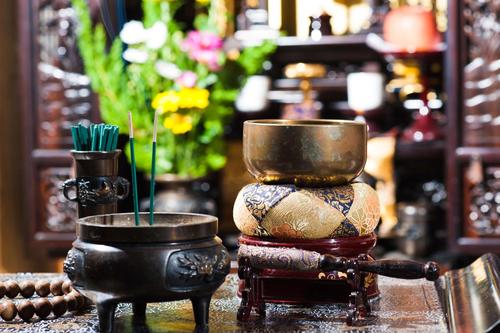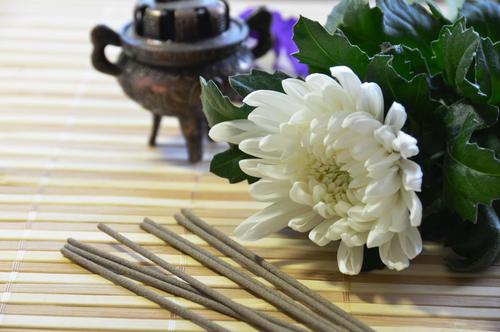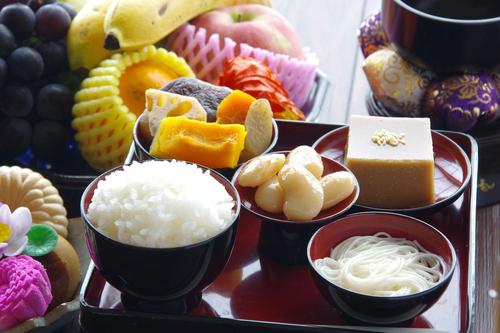Many people probably don't understand the specific meaning or necessity of the "offerings" that are prepared as a matter of course during the Obon period. Also, if it's your first time preparing offerings for Obon, you may be worried about what specific items you should buy.
In this article, we will explain in detail the meaning of the word "offerings" and the items used to make the Obon festival even better.
The meaning and duration of offerings during Obon

Obon is the time when the spirits of our ancestors return from the afterlife. The offerings prepared during this time are meant to pray for the safe return of our ancestors home, and to offer prayers and hospitality to our ancestors at home for the first time in a long time. The period for offerings is generally from the 13th to the 16th, with August 15th as the base date.
Ideally, offerings should be things that the deceased liked. However, since food spoils easily in the summer, raw meat and fish are not suitable for offerings. Also, if the flowers or food you decorated during this period go bad, you will naturally need to replace them.
By the way, the first Obon for the family and the deceased is usually celebrated on a grand scale, with as many decorations and offerings as possible.
What are the five basic offerings for Obon?

During Obon, regardless of sect, the basics of memorial services are to light incense in front of a lit Buddhist altar and to place offerings and flowers called "Goku." The five offerings have the following meanings and beliefs:
Fragrance
Ko means incense. The primary meaning of "ko" is to let ancestors and Buddha enjoy the fragrance. Incense also has the purpose of purifying the family making the offering and the person praying. The sight of incense smoke rising into the heavens is also interpreted as a connection between this world and the next. Every morning, make sure to offer incense at the end of the other five offerings.
flower
The deceased also enjoy the scent of flowers, so try to decorate with seasonal flowers that matched the deceased's preferences. However, it is best to avoid flowers with an overly strong scent or long vines.
Also, thorny flowers like roses are said to be unsuitable for offering as they are reminiscent of bleeding. Therefore, it is ideal to choose flowers that the deceased liked in life and that will bring peace of mind to those who visit.
Candle
It refers to something that provides light, such as a candle. The meaning of a candle in the Five Offerings is the light that illuminates the entire world. In Buddhism, it is said that by following the light of a candle, one will be able to eliminate doubt. Another view is that the way a candle slowly emits light and eventually burns out represents the impermanence of life.
purified water
It means clean water. It is said that the dead are thirsty, so make sure to keep the water on the Buddhist altar constant during Obon. However, there are some sects that interpret this as not offering water as an offering. If you are unsure about how to prepare for Obon, it may be a good idea to consult with temple staff or elderly people.
Food and drink
It is pronounced "Onjiki." Basically, the same food that the family is eating is opened and served on a plate so that the ancestors can eat it immediately. During Obon and Higan, it is common to prepare a special meal called Goryo-kyuzen, which consists of one soup and three side dishes.
Characteristics and reasons for offerings that are often chosen for Obon

Offerings for Obon do not necessarily have to be anything that is included in the five offerings. Ideally, you should purchase items that are commonly chosen in accordance with customs, so as not to violate the etiquette of offerings.
sweets
The standard offerings are non-perishable snacks such as cookies and rice crackers. If you plan to share them with others afterwards, choose individually wrapped items that are easy for the recipient to handle.
fruit
Fruits, many of which are in season during the summer, are also recommended as offerings for Obon. In the past, round shapes were associated with "connections," so round fruits such as peaches, watermelons, and grapes are ideal. However, when choosing a fruit basket, be careful with the number of fruits you choose, as if the number of fruits in the basket is divisible by an even number, it signifies the severing of ties with the deceased.
Somen noodles
Somen noodles, which are often chosen as offerings, have various meanings and origins depending on the region. For example, the shape of somen noodles can mean "long, thin succession of happiness." There is also a theory that somen noodles, which were originally prepared for Tanabata, an annual event held on July 7th, were also incorporated into Obon.
flower
Commonly chosen flowers for Obon include marigolds, irises, and gentians. As with fruits, it's best to avoid even numbers when it comes to flowers. It's a good idea to arrange these flowers in groups of 3, 5, or 7, and place them in pairs on either side of the Buddhist altar. Incidentally, for the first Obon after the 49 memorial services, it's common etiquette to use white flowers.
summary
Offerings during Obon are meant to welcome ancestors who return home during this time. Ideally, offerings should be centered around the "Five Offerings": incense, flowers, candles, purified water, and food and drink.
There are some things to keep in mind when offering items. When preparing for your first Obon, please review the points explained in this article and consult with the elderly.
This article has been partially re-edited by KARUTA from an article originally published on "Nihongo Biyori."
Any unauthorized reproduction or use of the contents, text, images, illustrations, etc. of this website is strictly prohibited.
